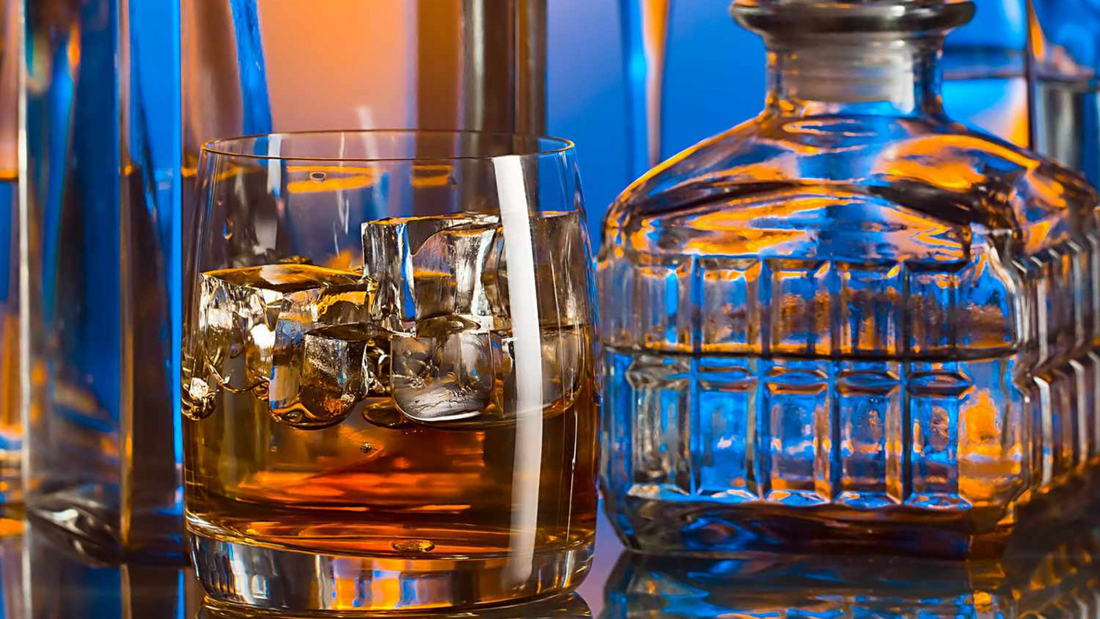
Bottles and Decanters — The Shape of Whisky
By Rafi Mercer
Whisky begins as liquid, but the moment it leaves the cask it becomes something else: an object in the world, held and framed by glass. The bottle has always been more than just a container. It carries identity, history, promise. Pick one up and you already know what to expect before the cork has been eased: the weight of the glass, the shape of the shoulders, the label pressed against the curve. It is the silent prologue to the dram.
But there is another tradition — one that steps away from the distillery’s own glass and replaces it with your own. The decanter, heavy crystal or cut glass, sitting on the sideboard, liquid glowing amber inside. Here, the whisky loses its label, its origin hidden, its presence redefined. The drink becomes not just a spirit but part of the room’s architecture, a symbol as much as a liquid. It is theatre, ritual, atmosphere.
Both have their place. Both tell different stories. And the choice between bottle and decanter is not trivial. It is a choice about what you value most: the authenticity of distillery design, or the elegance of presentation.
The bottle, in its original form, carries meaning. Distillers design them deliberately. Think of the squat, sturdy shoulders of Laphroaig, signalling peat and seriousness. The tall, elegant lines of Glenmorangie, all lift and clarity. The dark sherry-glass of Macallan, glowing like a cathedral window. To drink from the bottle is to accept the distiller’s vision, to see the whisky as they meant it to be seen. For the collector, the shelf becomes a gallery, each label a painting, each shape a story. There is something satisfying in keeping whisky as it was given, unaltered, untouched except by the opening of the cork.
A decanter tells a different tale. It is not about origin but about atmosphere. Heavy in the hand, refracting light through cut glass, it turns the liquid into part of the room. To pour from a decanter is to perform. You lift, you tilt, you let the stream catch the glow. The whisky is no longer tied to its branding; it is freed to be simply itself. In a listening bar, I’ve seen decanters lined behind the counter, no labels in sight, as if the ritual mattered more than the recognition. The drink becomes anonymous, yet intimate.
But there are trade-offs. Whisky in a bottle is sealed, protected by cork and design. In a decanter, it is exposed — to light, to air, to time. Leave it too long and the spirit fades, losing the sharpness that makes it sing. A bottle keeps its voice longer; a decanter lets it soften, like a record left in the sun too long. So the choice is partly practical. Do you value preservation or presentation? Do you want the whisky to remain as it left the distillery, or to become part of the room’s ongoing life?
For me, it depends on the moment. There are bottles I want to keep as they are, their labels a memory of where and when I found them. A GlenDronach bought on a rainy night in Edinburgh. A Hibiki carried back from Tokyo, its glass ridged like the twelve seasons it represents. To pour from those bottles is to return to the memory. A decanter would strip that away. But there are other nights where the performance matters, where the weight of the crystal in my hand, the light breaking through amber, the slow pour into a waiting glass feels essential. In those moments, the whisky is not just a drink but part of the architecture of the evening.
And there is something intriguing about the anonymity of a decanter. When the label is gone, you drink without expectation. You don’t know if the glass holds Highland honey or Islay smoke until you raise it to your lips. The whisky becomes pure experience, judged not by its reputation but by its resonance in that moment. It is like putting on a Blue Note record without looking at the sleeve, letting the sound surprise you.
Perhaps the truth is that both matter. Bottles connect you to history, to distillery, to place. Decanters connect you to ritual, to presence, to the room itself. One anchors whisky in its past; the other releases it into its present. One is memory, the other performance. And whisky, like music, needs both.
So the question of whether to keep whisky in the bottle or the decanter is not really about storage. It is about meaning. Do you want your whisky to remind you of where it came from, or to shape the moment you are in? Do you want it to sit as a story on the shelf, or to act as architecture in the room? Neither is wrong. Both are ways of honouring the spirit.
And perhaps the best answer is not either-or, but both. A shelf lined with bottles, each telling its own tale, each a record in its sleeve. A decanter on the table, weighty and luminous, ready to be poured as the record spins. The bottle for memory, the decanter for presence. The two together making whisky what it has always been: not just a drink, but a way of holding time.














